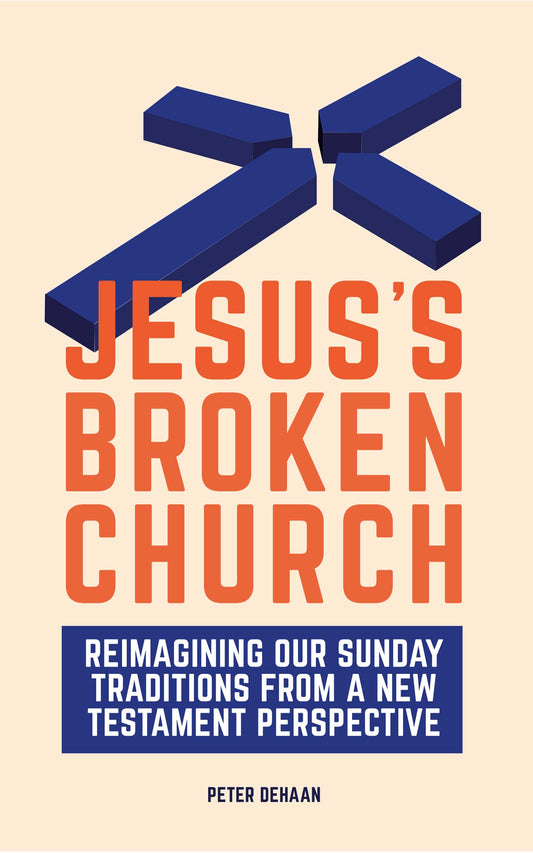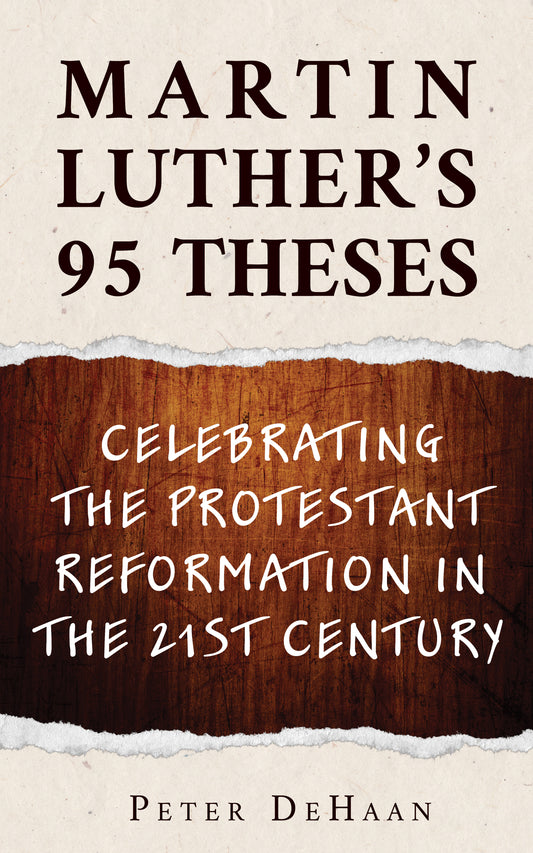95 Tweets: Celebrating Martin Luther in the 21st Century (ebook)
95 Tweets: Celebrating Martin Luther in the 21st Century (ebook)
If Martin Luther lived today, his followers might take to social media to spread his 95 theses. Discover what they might have tweeted.
Couldn't load pickup availability
95 Tweets has been updated and republished as Martin Luther's 95 Theses.
But 95 Tweets is still available.
Get your copy today!
---------------------------------------------
How it works. It’s as easy as 1-2-3:
1. Complete your purchase here.
2. You’ll receive an email from BookFunnel to download or access your book. (Click the “help” link in the email if you have questions.)
3. Start reading right away on any device.
If you have questions about ordering, check out our FAQs.
View full details
Would you like to read a sample?
Click here to read a sample
Tweeting Martin Luther
Martin Luther lived five hundred years ago. He was born at the dawn of the modern era. He became a leading figure in the Protestant Reformation. A key technology in birthing the modern era was the printing press. It also helped drive the Reformation. The printing press propelled the spread of information. This moved a premodern society into the modern era. The same technology broadcast a message of spiritual enlightenment to a people poised for religious change. We politely refer to the transformation that emerged as the Protestant Reformation, but the word revolution might better describe the spiritual rebellion that followed.
The fuse that ignited this came from a list of ninety-five concerns that this German monk had about the abuse of one specific church practice: the sale of indulgences, which, at the risk of oversimplification, allowed people to buy their salvation. We call his talking points ninety-five theses.
While the words indulgence and theses may make our heads spin and send us running to something less confusing, it’s worth the effort to understand what they mean. When we do, the religious reformation that took place five hundred years ago will make more sense to us. And this knowledge may help us consider more reforms we need to make today.
That’s the goal of this book.
As we go, we’ll play with things a bit and respectfully reformat Luther’s ninety-five theses into ninety-five tweets, complete with hashtags, for today’s online audience. Then we’ll look at ninety-five more tweets that might apply to the church now, followed by ninety-five tweetable discussion questions.
Are you ready for the ninety-five tweets? Hold on a bit. First we need some background.
The Early Years of Martin Luther (1483 to 1517)
Hans Luther, a German peasant, and his bride, Margaret, who came from the middle class, committed their lives to each other. Though having different social backgrounds, Hans pledged to work his way up in life. He promised to provide for Margaret and their future family in the way she grew up.
Devout Catholics, Hans and Margaret welcomed their firstborn into the world on November 10, 1483. The couple baptized their baby the next day on St. Martin’s Day. It seemed fitting to give their son the name Martin.
As Hans worked in the mines, Margaret, a stern disciplinarian, taught little Martin the Lord’s Prayer, the Ten Commandments, and the Apostles’ Creed. The Luthers celebrated Mass each week. They instilled in Martin a love for singing, both in the church choir and at home with family.
Consistent with the Church’s teaching of the day, Martin learned of a Jesus who not only came to save but who also judged, demanding holy living and exacting a dreadful wrath over those who fell short. This tough teaching gripped Martin and caused him great agony for the first part of his life.
At eight years old, Martin started school. He learned Latin from strict teachers who governed with harsh discipline. Despite the school’s rigid setting, he performed well. At age thirteen and showing promise, Martin continued his education. He progressed through a series of schools, as was the practice of the day for students with potential. This prepared him for a professional job, possibly in law, which his father desired for his son. For the most part, Martin accepted his dad’s career preference. A highly respected occupation, a career in law would provide Martin with a good income.
But Hans could afford to pay for only part of Martin’s schooling. As the accepted practice of the day, the lad would try to make up the difference through begging and street singing. Despite this, Martin relished learning. He desired to honor his dad by becoming a lawyer, even though young Martin felt occasional pulls to serve God and the Church, a profession that lacked both the pay and the prestige of law.
At eighteen, Martin began the final phase of his education, which his dad could now fully cover. An excellent student, Martin soon earned his bachelor’s degree and then his masters two years later. Yet he continued to struggle to balance his personal worries about spiritual issues of sin and punishment, as taught by the church, with his father’s push for him to pursue law. Martin vacillated between honoring the wishes of his dad—a man he both loved and feared—and responding to God’s call. Despite not liking the legal profession, Martin chose to follow the wishes of his father.
Almost four years later and not yet 22, Martin went home for a visit. What he experienced along the way reminds us of Paul’s conversion experience on the road to Damascus (Acts 9:3-4).
Caught in a thunderstorm, a nearby lightning strike knocked Martin from his horse. Fearing death from the next flash of electricity, he pledged himself to a lifetime of service to God if Saint Anna—who protected the miners—would also save him. The nearness of death and fear of eternal judgment gave him the push he needed to pursue God’s will instead of his father’s. Martin stopped his education in law and entered a monastery under the order of Saint Augustine. This devastated Hans. Even though he eventually gave his permission, he never approved.
Despite following God’s call on his life, Martin’s struggle with his perception of God’s high demands and inevitable punishment continued at the monastery. There he engaged in extreme, self-inflicted practices of mortification, which he later called his martyrdom, to try to conquer his desires of the flesh.
His mortifications included fasting to the point of being unable to move, locking himself in an unheated cell for prayer until anxious friends broke down the door to save him, and praying at the altar until he passed out.
Yet none of his efforts lessened his terror over God’s judgment. In fact, the harder he tried to keep God’s commandments, the worse he felt. Even participating in the Church’s sacrament of penance failed to provide the relief he sought. Though many in the monastery tried to ease Martin’s internal spiritual struggle, no one had much success.
Later, in 1510, while on a trip to Rome for his monastery, Brother Martin also journeyed there as a pilgrim. He sought spiritual enlightenment through the experience. But what he saw there shattered his idealism over Church practices. Rome had become anti-Christian, with the pope and cardinals giving in to worldly pursuits and corrupt practices. They strayed far from what the Bible taught and made up doctrines that suited them to wield power and amass wealth. In doing so, they pushed God aside.
Disillusioned, this experience scarred Martin, and his despair deepened.
Two years later, he received his doctor of theology degree, which permitted him to teach. He chose Wittenberg University. There he continued to wrestle over church teaching that emphasized doing things to earn salvation from what he read in the Bible, which says that righteous people will live by faith (Romans 1:17, which references Habakkuk 2:4).
Students flocked to his classes. They embraced his bold teaching and his fresh examples that gave his words meaning, so different from the methods of other professors. In 1516, Martin published his first book, based on his lectures on the book of Romans. His renown as a scholar, professor, and preacher grew. Over his lifetime, many more books would follow.
Martin continued to study the Bible, and he struggled with what he read.
Though a devout Catholic and not a rebel by nature, his anxieties wormed their way into his teaching. Martin loved his Church, its traditions, and its common people—which he was by birth. Yet out of integrity, he spoke with honesty instead of blindly repeating what the Church leaders decreed; he saw some of the instruction from Rome as heretical. This prepared him to take action, something that would change his life, along with the rest of Christianity.

Meet Author Peter DeHaan
Peter DeHaan, PhD, often makes religious people squirm, but spiritual seekers cheer. He’s not trying to be provocative, but he seeks truth, even if it makes some people uncomfortable. He yearns for Christians to push past the status quo and reconsider how they practice their faith in every area of their lives.
Peter earned his doctorate, awarded with high distinction, from Trinity College of the Bible and Theological Seminary. He lives with his wife in beautiful Southwest Michigan and wrangles crossword puzzles in his spare time.
-
Women of the Bible: The Victorious, the Victims, the Virtuous, and the Vicious (ebook)
Regular price $7.99 USDRegular priceUnit price / per -
Jesus’s Broken Church: Reimagining Our Sunday Traditions from a New Testament Perspective (ebook)
Regular price $6.99 USDRegular priceUnit price / per -
Martin Luther’s 95 Theses: Celebrating the Protestant Reformation in the 21st Century (ebook)
Regular price $5.99 USDRegular priceUnit price / per -
52 Churches: A Yearlong Journey Encountering God, His Church, and Our Common Faith (ebook)
Regular price $7.99 USDRegular priceUnit price / per





